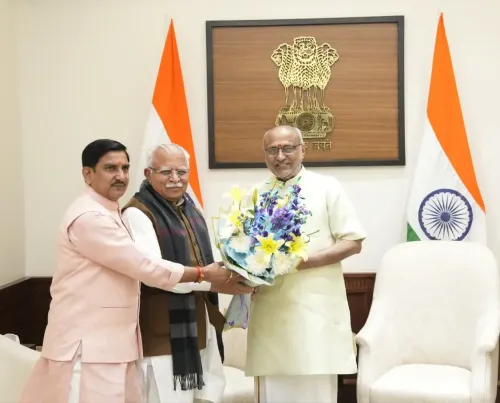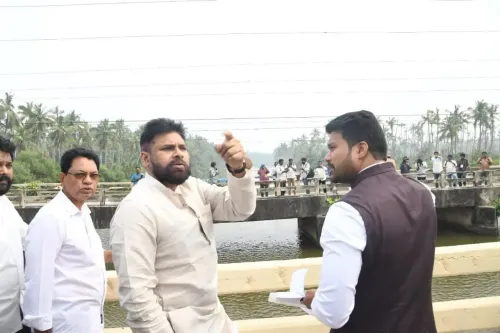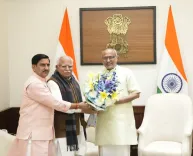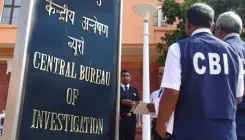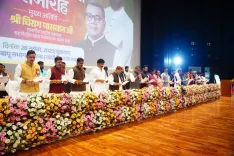Is the Modi Era a Transformational Turning Point for India?
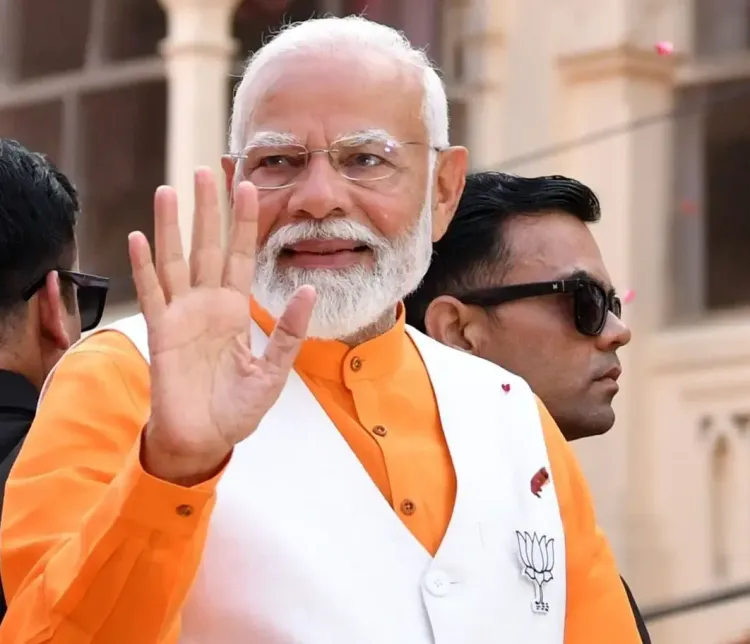
Synopsis
Key Takeaways
- Accountable governance has replaced bureaucratic inefficiency.
- The mindset has shifted from 'Chalta Hai' to 'Badal Sakta Hai'.
- India is on track to become the third-largest economy by 2027.
- Bold security policies reflect a new national character.
- A civilisational renaissance is reshaping India's identity and values.
New Delhi, Oct 7 (NationPress) As Prime Minister Narendra Modi embarks on his 25th consecutive year leading an elected government — initially as Gujarat’s Chief Minister in 2001 and subsequently as India’s Prime Minister from 2014 onward — it signifies not merely a political achievement but a civilisational transformation.
In a democracy as extensive, varied, and contentious as India’s, such enduring leadership is uncommon. Even more extraordinary is the extensive change one leader has managed — shifts that many countries aspire to attain over generations, if they achieve them at all.
Today, India is not just advancing; it is being redefined — in structural, psychological, and moral dimensions. A novel governance paradigm has surfaced: one that is accountable, outcome-focused, participative, and transformative across generations. The Modi era transcends mere leadership; it represents a period of reimagining.
Akhilesh Mishra, CEO of BlueKraft Digital Foundation, identifies five clear transformations that illustrate the profound impact of the Modi era.
Accountable governance: From anecdotes to analytics
Before 2014, India's governance lacked clarity, being process-oriented rather than results-driven, often resistant to accountability. Goals were stated without deadlines, and results were rarely monitored.
Under PM Modi, this has undergone an irreversible change. Dashboards, real-time oversight, and data-driven decision-making have become standard practices across ministries. Initiatives like Swachh Bharat, Jal Jeevan Mission, and PM Awas Yojana are tracked with GPS-enabled resources, live dashboards, and performance evaluations. Governance is no longer a bureaucratic exercise but a commitment to measurable results. A culture of delivery has supplanted the legacy of stagnation.
From 'Chalta Hai' to 'Badal Sakta Hai': A nation's changed mindset
India’s political culture was long characterized by a sense of fatalism — the notorious 'chalta hai' attitude. However, this dramatically shifted under PM Modi. Now, the nation embraces 'badal sakta hai' (change is possible) — a belief reinforced by tangible results.
In 2014, a previous administration set a target for India to become the third-largest economy globally by 2043. Today, that goal is attainable by 2027 — nearly twenty years ahead of schedule. The transformation in national character is evident: shifting from passive acceptance to confident ambition.
Security policies illustrate another stark change. The hesitant responses following the 26/11 attacks have been replaced with assertive strategies — Balakot, surgical strikes, and a decisive message: India will no longer be a silent victim. This represents not only a tactical evolution but also a psychological shift — affirming sovereignty and self-respect.
From “Ye Kaise Hoga?” to “Hoga Kaise Nahin?”: Mission mode governance
Prior to 2014, India’s aspirations often faltered due to bureaucratic inertia and defeatism. The question “Ye kaise hoga?” (How will this happen?) was prevalent across ministries and public discourse. This has now transformed into “Hoga kaise nahin?” (How can it not happen?).
Consider financial inclusion: despite decades of promises, only 58% of Indians had bank accounts by 2014. After PM Modi’s Jan Dhan Yojana, that figure surged past 90%. Today, India boasts over 500 million Jan Dhan accounts — the world’s largest such network.
Similarly, Article 370 — once deemed politically untouchable — was repealed. The Ram Mandir? Currently under construction. These are not mere policies; they symbolize a nation reclaiming its determination. A mission mode approach now governs government operations — with defined timelines, accountability, and unwavering resolve.
A national belief: “This is our time”
Beyond policy changes, PM Modi has ignited a belief — a widespread, cross-generational conviction that this is India’s moment.
Whether it’s confronting China at Galwan, challenging global hypocrisy, or launching the Chandrayaan mission to the Moon’s south pole — India now acts with the confidence of a civilisational power that has awakened. No longer hesitant or deferential — India’s voice in global diplomacy, trade discussions, and multilateral platforms resonates with authority, not subservience.
This newfound belief is mirrored in India’s startup surge, Olympic medal counts, booming stock market, and extensive digital public infrastructure. This is not merely economic or geopolitical growth; it is a manifestation of national self-confidence.
Civilisational renaissance: A nation rediscovers its soul
While GDP growth, infrastructure, and technological advancements dominate headlines, PM Modi’s most significant legacy may be cultural: the revival of India's civilisational self-assurance.
For decades, India was conditioned to view its traditions with skepticism, its identity as regressive, and its heritage as incompatible with modernity. PM Modi’s India challenges that narrative. From the grand new Parliament building to the G20’s cultural diplomacy, from the Kashi Vishwanath Corridor to the Ram Mandir, a proud civilisational consciousness has returned to the forefront of national life.
This renaissance is not about nostalgia; it is about harmonizing modernity with enduring values. It is India’s message to the world: we are not merely advancing — we are returning. And within that return lies the future of the world’s largest democracy.

